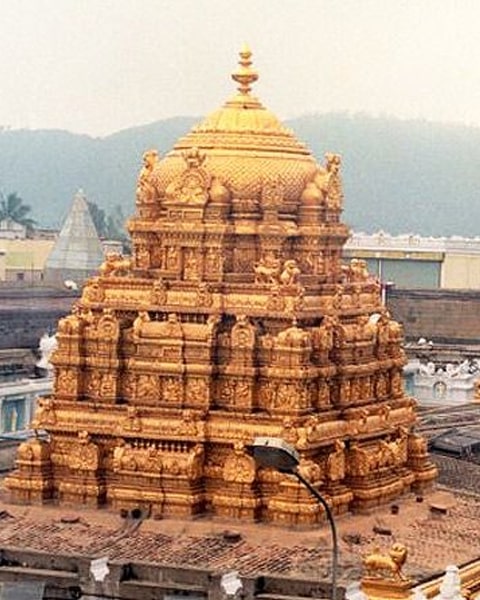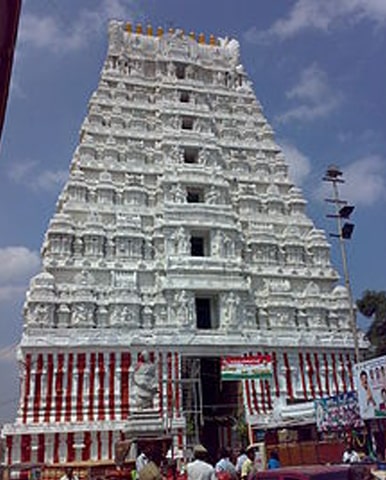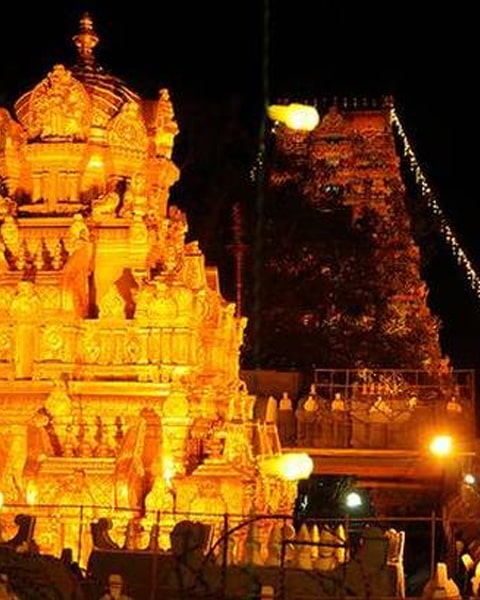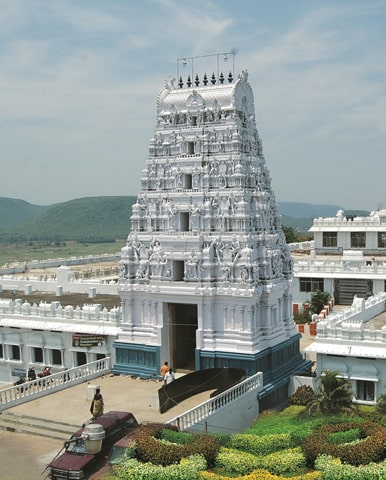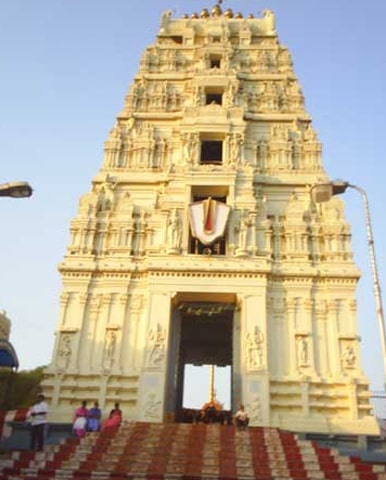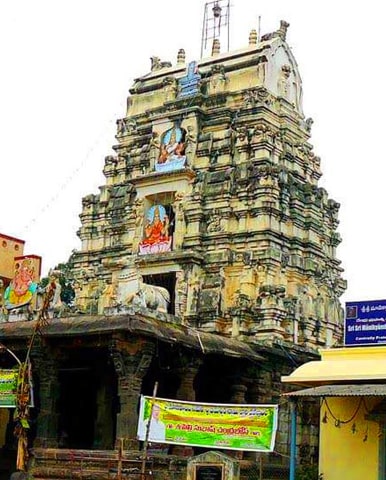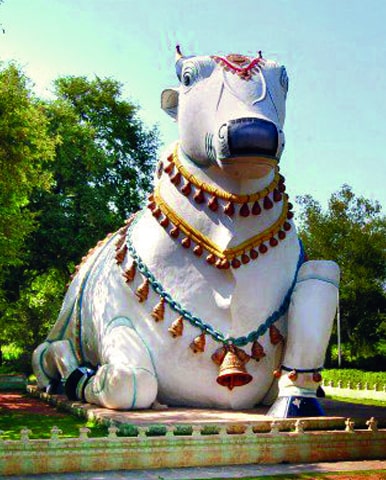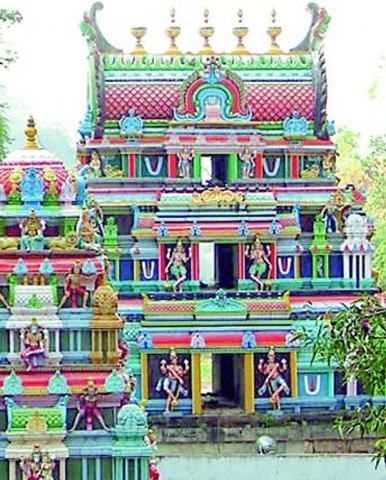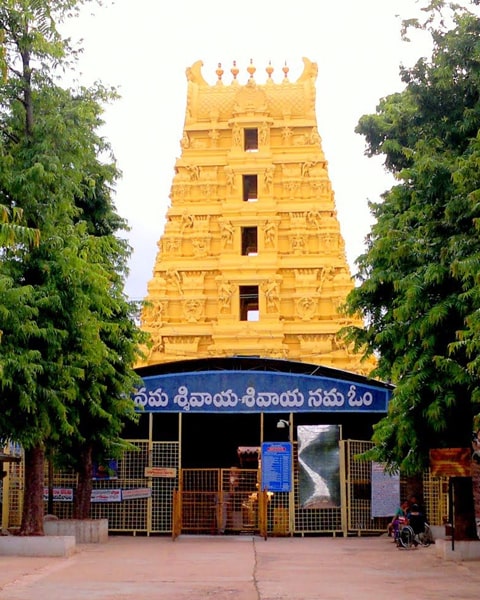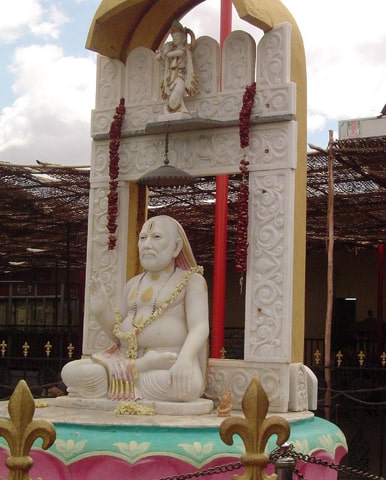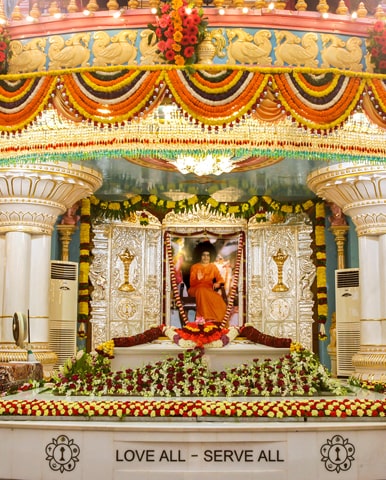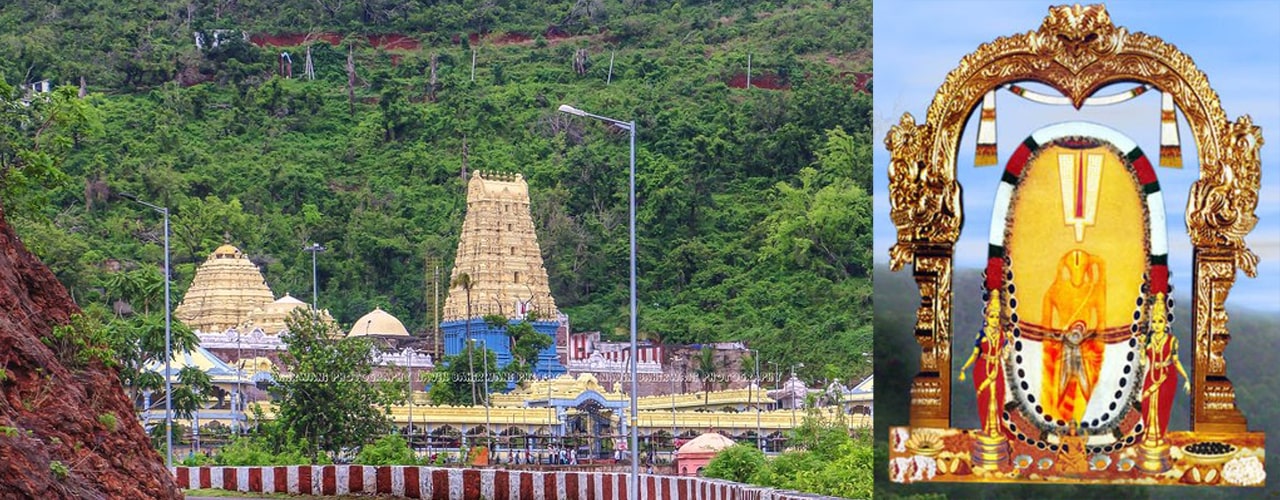
Sri Varahalakshmi Narasimha Swamy Temple, Simhachalam
The Sri Varaha Lakshmi Narasimha temple, Simhachalam, is a significant Hindu temple located on the Simhachalam Hill Range in Visakhapatnam, Andhra Pradesh. Situated 300 meters above sea level, this temple is dedicated to Vishnu, who is worshipped as Varaha Narasimha. According to the temple’s legend, Vishnu took the form of a lion’s head and human body to save his devotee Prahlada from his father Hiranyakashipu’s murder attempt. Throughout the year, except on Akshaya Trutiya, the idol of Varaha Narasimha is covered with sandalwood paste, giving it the appearance of a linga.
Simhachalam is one of the 32 Narasimha temples in Andhra Pradesh that hold great importance as pilgrimage centers. In the medieval period, it was considered a significant hub of Vaishnavism, along with Srikurmam and other temples. The earliest inscription found at the temple dates back to the 11th century CE, documenting a gift made by an individual during the reign of Chalukya Chola king Kulottunga I. During the rule of Eastern Ganga king Narasimhadeva I in the latter half of the 13th century, the temple complex underwent significant physical transformations. Narahari Tirtha, a philosopher and minister of the Eastern Ganga dynasty, converted the Simhachalam temple into a renowned educational institution and a religious center for Vaishnavism. Over time, it received patronage from various royal families, including the notable Tuluva dynasty of the Vijayanagara Empire. From 1564 to 1604 CE, the temple experienced a period of religious inactivity lasting 40 years. In 1949, the temple came under the administration of the state government and is currently managed by the Simhachalam Devasthanam Board.
The Simhachalam temple showcases a fortress-like appearance from its exterior, featuring three outer courtyards and five gateways. Its architectural style is a fusion of Kalinga, Chalukyas, Kakatiyas, and Chola influences. Interestingly, the temple faces west, symbolizing triumph. Adjacent to the temple, there are two sacred tanks: Swami Pushkarini and Gangadhara. Within the temple premises, numerous sub-shrines and mandapams can be found. The religious practices and customs of the temple are based on the teachings of the Vaishnavite philosopher Ramanuja, following the principles outlined in the Satvata Samhita, a significant text of the Pancharatra Agama.
Simhachalam is the second-largest revenue-generating temple in Andhra Pradesh, following Tirumala. Devotees hold strong faith in the deity’s ability to bless women with offspring and fulfill the desires of devotees. The temple celebrates various festivals, with Kalyanotsava and Chandanotsava being the prominent ones, along with Narasimha Jayanti, Navaratrotsava, and Kamadahana. These festivals bear the influence of the Dravida Sampradaya. Additionally, the temple is mentioned in numerous literary works, including those by renowned poets, as well as anonymous writers, with many of these references preserved in the Government Oriental Manuscripts Library.
How to reach
- By Road: Simhachalam can be accessed by road from Simhachalam Bus Depot by APSRTC city buses, which is 4.4 kilometers, or by Simhachalam Temple Bus Service. APSRTC operates frequent buses from Dwaraka RTC complex in Visakhapatnam city which is 19.9 kilometers to SimhachalamTemple.
- By Train: The nearest railway station is at Simhachalam, about 11.1 kilometres from Simhachalam Temple. Visakhapatnam railway station is the main station which is about 18.5 kilometers.
- By Air: The nearest airport is at Vishakhapatnam, which is well connected with flights from all major cities.
Share This Post:
Related Temples
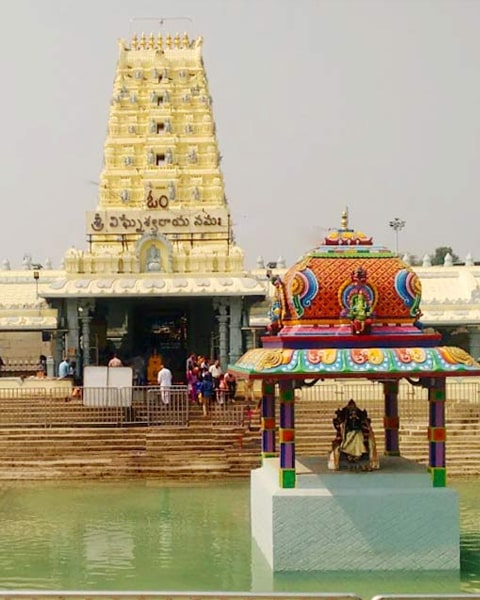
Sri Swayambhu Varasidhi Vinayaka Temple, Kanipakam
How to reach
- Nearest airport is Visakhapatnam
- Nearest railway station is Simhachelam
- Nearest bus station is Simhachelam

